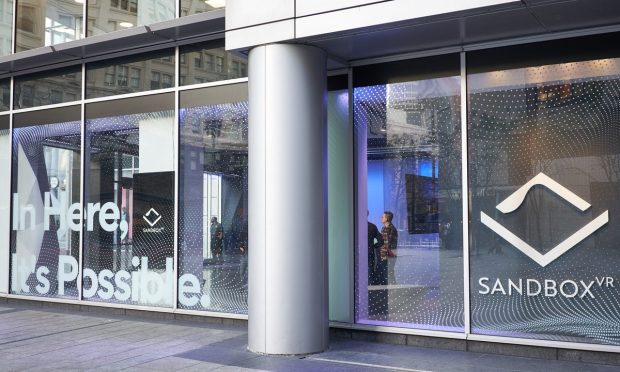VR Experiences Help ‘Captivate and Keep’ Consumers at Retail Locations

With online shopping ubiquitous and delivery options getting faster, it may be hard for some consumers to justify going to a crowded store or shopping mall. According to PYMNTS’ Connected Economy Research, 92 percent of consumers have placed an online order for a product or service at least once recently and 77 percent have contacted a merchant online.
David Friedman, global vice president of real estate for Sandbox VR, told PYMNTS that as more shopping shifts online, retailers and landlords need to start thinking about integrating entertainment elements into their stores and properties in order to draw consumers in. “Products like kitchenware, things like that, you can buy all that online,” he said. “But you can’t buy experience online, you can’t go with your friends and go to a place and have an experience and go out to dinner.”
According to PYMNTS research, the share of online native shoppers has grown by at least 17 percent since the pandemic began while the share of consumers who prefer brick-and-mortar has dropped by at least 10 percent.
Related: New Data: More Than Forty Percent of U.S. Consumers Shop Through Digital Channels … And Stay There
Sandbox VR, inspired by the Holodeck from “Star Trek,” creates virtual reality (VR) experiences for up to six people to experience together. Friedman said 90 percent of customers book Sandbox ahead of time, suggesting the experience is a lure, not something people do to kill time while waiting for something else.
Aylang Lou, Sandbox vice president of retail operations, said when she was growing up, coffee shops were the hip places to hang out; Sandbox VR is just a modern version of that.
“We do say when we talk to landlords that we want to drive traffic to their center, and when they’re (consumers) there, we want to captivate them and keep them there,” Lou said in an interview with PYMNTS.
Some retailers have also been embracing the idea of “retailtainment” to draw customers in-store, with Lego debuting a new flagship store in New York City that includes an interactive Brick Lab, a Personalization Studio in which customers can create a memento of their visit, and a Storytelling Table where they can learn more about the Lego design process. Lego plans to export many of these elements to 100 other stores around the world in the coming year.
Apple is also reportedly beginning to host in-store events and experiences other than shopping at its stores, a continuation of the tech company’s pre-pandemic strategy. Apple additionally has a “Creative Studios” program launching in Los Angeles and Beijing that teaches kids from underrepresented communities to make movies, music and photos with Apple products.
Read more: Optimism For Re-Imagined Brick-and-Mortar Rises From High-End Retail To Final Mile
Location, Location, Location
When looking for where to open a Sandbox VR location, Lou said the company looks for “places that are trending, that’s young, that’s vibrant,” and easily accessible either by car, which requires enough parking, or by public transit.
Friedman said because of this, Sandbox isn’t currently thinking too much about the suburbs right now, choosing instead to focus where millennials and Gen Z are already working and hanging out. A good portion of the company’s business to date has been corporate team building and hosting events, he said, which then drives traffic to nearby stores and restaurants.
“Entertainment, restaurants, theaters, all those kinds of things are the areas we typically try to work,” Friedman said.
What sets Sandbox apart, though, is that the consumer isn’t simply watching a movie or taking part in a scripted adventure, Lou said — “there’s actually activities in there that forces the group to socialize” in order to progress the story and level up.
“It’s about the social experience of it,” Lou said. “It’s getting with your friends and having fun, especially in this time where people are so tired of Zoom.”
